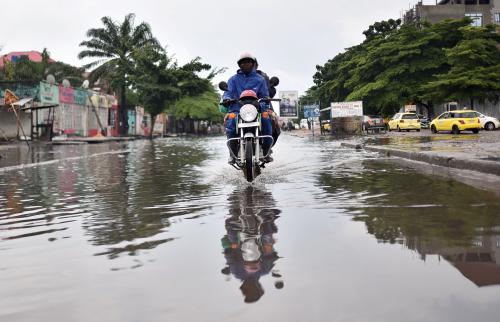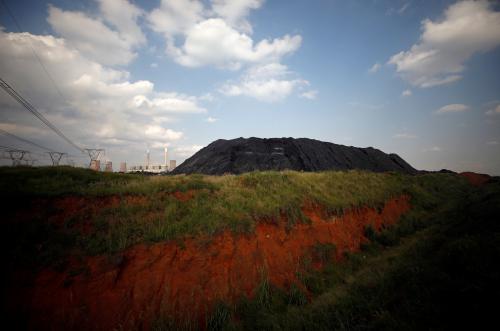In a recent article from the International Monetary Fund’s quarterly publication Finance and Development, researchers explore how scientific advances in renewable energy technology, its falling costs, and the continent’s geography can contribute to renewable energy becoming a prominent, affordable, and competitive source of electricity in Africa. Indeed, while access to electricity in sub-Saharan Africa is expanding, with the region’s population expected to double from 1 billion people in 2018 to over 2 billion in 2050, researchers with the IMF forecast that demand for electricity will increase 3 percent annually. Right now, the main sources for the region’s energy—coal, oil, and traditional biomass (wood, charcoal, and dry dung)—are associated with severe environmental and health damage.
Integrating and designing an energy mix largely reliant on renewable energy would, according to the authors, simultaneously support strong growth, low emissions, and ecologically sustainable development. However, as the authors illustrate in Figure 1, Africa’s current energy mix is almost entirely composed of fossil fuels and biomass.
Figure 1. Africa’s energy mix: Present and projected
Source: Gregor Schwerhoff and Mouhamadou Sy, “Where the Sun Shines,” Finance and Development, IMF, 2020.
Note: CCS (carbon capture and storage) is an emerging technology that captures carbon dioxide (CO2) directly from the source of pollution (e.g., coal power plant) and sequesters it to reduce emissions and prevent it from entering the atmosphere.
Although the authors address the applicability of carbon capture and storage (CCS) technologies accompanying high emissions fossil fuel and biomass energy production in the future, they are uncertain about large-scale reliance on these accompanying technologies due to lack of testing at industrial scale. Importantly, the authors’ projections of the continent’s energy mix illustrates that fossil fuels and biomass will play an increasingly important role by 2050, but, ultimately, both conventional energy sources will decline and be dwarfed by a diverse array of renewable energy sources dominated by solar.
The authors also write that a substantial reduction in renewable energy’s costs will enable Africa’s renewable energy transformation. Figure 2 illustrates the evolving cost of various forms of renewable energy. The most dramatic change is the precipitous decline in the cost of solar photovoltaic energy, which decreased 77 percent from 2010 to 2018. Trailing solar’s improvement in affordability, are both on- and off-shore wind, which experienced notable, yet less sharp, declines in cost.
Figure 2. Cost of generating electricity with renewable sources
Source: Gregor Schwerhoff and Mouhamadou Sy, “Where the Sun Shines,” Finance and Development, IMF, 2020.
However, while wind and solar have become increasingly cost-competitive, the implementation of renewable energy in Africa continues to lag behind much of the rest of the world: Solar and wind together constituted 3 percent of Africa’s generated electricity in 2018, versus 7 percent in other regions of the world.
Given that technological advances in energy storage have mitigated supply fluctuation issues with renewable energy and, thus, bolstered its reliability, the authors suggest financing renewable energy in Africa is now the most significant challenge. They contrast the comparatively inexpensive cost of building a new fossil fuel plant, which is expensive to run, and the high installation costs of renewable sources, which are inexpensive to operate. The high upfront cost of renewable energy necessitates greater capital expenditure. Consequently, the authors propose that African countries “mobilize public, private, and multilateral and bilateral donor financing to raise funds” for renewable energy infrastructure projects to mitigate the expensive upfront costs. In addition, they also encourage advanced economies to honor the 2015 Paris Agreement—in which those advanced economies committed to “0.12 percent of the world’s GDP a year through 2025 to address the needs of developing economies” —as a means to finance renewable energy infrastructure development and facilitate the transition to a low-carbon energy economy in Africa.
For more on climate change and Africa, read “Climate adaptation and the great reset for Africa” and “Africa can play a leading role in the fight against climate change.”
For more on renewable energy and Africa, read “The effects of the global energy transition in Africa: Disruption and opportunity” and “Figures of the week: Access to affordable, sustainable, and modern energy in Africa.”










Commentary
Figures of the week: Africa’s renewable energy potential
May 5, 2021